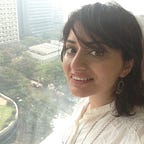Interview with Paul Clipson
The filmmaker Paul Clipson died this past weekend. Like many others, I knew him; he was a Bay Area fixture, a friend and trusted collaborator of many of my musician friends. I’ll always remember him as soft-spoken and kind, with a gentle and generous nature. He was modest and a bit shy — happy to hide behind his film projector while the musician took the stage. But he was incredibly enthusiastic when talking about the art and people he loved.
I interviewed Paul in 2015, when I was in San Francisco and he was traveling in Hong Kong. He hadn’t been sleeping much, and hadn’t adjusted to the shift in time zone. He was excited to talk about filmmaking and his numerous collaborations with musicians. What follows is part of the long unpublished interview we did (some of it was published in KQED — I’ll put up the rest later.) I hope this helps someone.
PAUL CLIPSON
Interview with Geeta Dayal, 2015
Note: I’ve cut out the questions and stitched Paul’s responses together into an essay.
I’ve made films since I was a teenager. I’m just a film fanatic. I love film — just the history, everything. As soon as I could get a Super8 camera, I was making films where I grew up in Michigan. But what really got me into making films like I am now, is that I became really good friends with Jefre [Cantu-Ledesma] at work, at the SFMOMA, where I still work as a projectionist. Around 2002–2003, we became friends, just talking about our interests. He was about to start a record label called Root Strata…
We started working together, and I started showing Super8 films with Tarantel and it broke out into working with him solo and other people…at first I wasn’t generating work with music in mind, but slowly I was.
To be a friend and working around musicians, I was struck by the social aspect of working with musicians. The spontaneity of it. What I was seeing with Jefre and some other people, Gregg Kowalsky, Barn Owl…was how musicians were all hanging out, they were friends, they were doing music, things with other people, week by week.
As a filmmaker I had been trained to plan and wait — and have a script, and raise money. I wanted to work more like a musician, or a painter or a writer, where you just write whenever, at 3 in the morning. Structurally for me, I started to work more often and the impetus was to do projects with these bands. But I just started to work more rapidly — it made me incredibly productive in a different way, and [I was] also showing work in the way that music is presented. Not always as a finalized thing.
With ambient drone type pieces, somebody will perform a show in San Francisco, and a week later they might do it in this [other] way…I started making films that I could show with different people…it was just this amazing way of sharing work, where the film was less of a definite thing, forms with music.
I was talking about delay pedals and loops and things. I started layering images — these structures of music and repetition and gesture, and this sense of making an environment, within the space that music is played. It changes that place — it changes their experiences of themselves as they take that in. I can show it with music, and so it allows me to experiment and take chances.
In a narrative film, there’s often this idea — what’s your point? What’s being said? I like working in more of a stream-of-consciousness way, where you’re not sure of your motivation. I would go out and film and take these walks. I was being aware of Guy Debord and the Situationists and the idea of the dérive…everybody does this, and children do it. This idea of a playful imaginative way of socially restructuring our experiences through changing our behavior of space — navigating a city through changing our function of the city, going downtown to work, going to the suburbs to work.
If you walk around in a haphazard way — this exercise I started doing in the ’60s — this space would change and there might be this opportunity to create…[you’re] taking walks in this purely formal level, when you have this walk and you have an epiphany….Making films and working that way — going out and not knowing what you’re looking for, but suddenly being caught by a color or texture or a reflection in a puddle — suddenly you get sensitized to wanting to find more reflections in puddles.
From doing many shows over the last 10–15 years, there’s a kind of intuitive — I’m not a musician and I’ve not made a lot of narrative work, just telling a story, avoiding the idea of a narrative. Durations create kind of a structure…my work tends to be repetitive in a gestural way of exploring spaces, through strokes. Almost like a musician is playing repeated phrases in a guitar, or a loop, cycling through…when the listener experiences that repetition, it starts creating an environment. It coalesces into a fabric that’s a space. It’s no longer just repetitious…
I shoot a lot in terms of size too, spaces in terms of a macro perspective and a micro perspective and vast spaces that could be a mile away, half a mile away, and juxtaposing those senses…What’s cool is…I’ve used 16mm and super8, is that limitation. I’m very drawn to forms that have certain limitations, but in that rigidity of the form, you suddenly have this freedom. Sometimes that relates to the thematics of what you’re doing. I often find that shooting in film inspires me to go out and record space — like a field recording. Going out and doing research.
